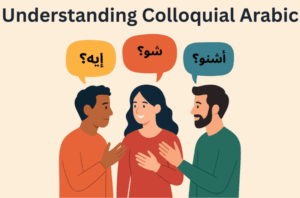Arabic, renowned for its complex grammatical precision and rich structure, brings nouns and adjectives together in a unique interplay. Unlike many languages, Arabic doesn’t just let nouns and adjectives coexist—they must agree in intricate ways. This interaction between nouns and adjectives forms the backbone of descriptive language, ensuring that phrases sound cohesive and grammatically correct. Whether you’re learning Modern Standard Arabic (MSA) dialects Levantine , Egyptian , Gulf , or Darija , understanding the rules of agreement between nouns and adjectives is crucial for fluency.
Introduction: Why noun-adjective agreement matters Every language has rules that dictate how words interact, but in Arabic, these rules go beyond simple word order or vocabulary. Adjectives must follow and match the nouns they describe in gender, number, and definiteness . This agreement creates a harmony that is essential to the natural rhythm of Arabic speech and writing.
For instance, describing “a useful book” in Arabic means aligning the adjective مفيد
(useful) with the noun كتاب
(book) in terms of gender, definiteness, and number:
الكتاب المفيد
– The useful book
كتاب مفيد
– A useful book (note how both the noun and adjective are masculine, singular, and indefinite).
A video clip from the Al-Menahel in Modern Standard Arabic. The rules of agreement between nouns and adjectives Gender agreement Arabic nouns and adjectives are either masculine or feminine , and the adjective must match the noun’s gender.
Masculine singular:ولد طويل
– A tall boy
Feminine singular:بنت طويلة
– A tall girl
A story in Palestinian dialect . Number agreement Arabic distinguishes between singular , dual , and plural forms for nouns and adjectives. Adjectives must agree accordingly:
Singular: طفل صغير
– A small child.
Dual: طفلان صغيران
– Two small children.
Plural: أطفال صغار
– Small children.
In MSA, human plural nouns take plural adjectives , while non-human plural nouns often take feminine singular adjectives . However, in colloquial Arabic, human plural nouns can take plural or feminine singular adjectives.
Human: ناس طيبون
(MSA) or ناس طيبين
and ناس طيبة
(colloquial) – Nice people
Non-human: كتب جديدة
(MSA) كتب جديدة
(colloquial) – New books
A Palestinian uses the adjective طبيعية
(normal) a feminine term, to describe ناس
(people. )Definiteness agreement Definiteness plays a significant role in how nouns and adjectives interact . Both the noun and its adjective must share the same definiteness.
Indefinite: كتاب كبير
– A big book.
Definite: الكتاب الكبير
– The big book.
Noun-adjective agreement in colloquial Arabic Simplified agreement in dialects Colloquial Arabic simplifies many rules while preserving core agreements. Number and definiteness agreements are always respected, but dual forms are replaced with plural forms always using the suffix ين
for sound plurals. For gender agreement, in case of human plurals, regardless of the gender, the adjectives usually come in the masculine form for ease of use.
الناس الطيبين
– The kind peopleالبنات المصريين
– The Egyptian girlsصاحبات كرما
– Generous (female) friendsطفلين حلوين
– Two beautiful childrenكياس جديدة
– New bags (paper or plastic bags)
A Jordanian speaker uses the masculine plural adjective متحملين
(enduring) to describe بنات
( the girls) , meaning herself and her sisters. Practical tips for learners
Practice agreement by gender and number : Start with simple sentences and gradually include masculine, feminine, single, plural, and dual forms.Focus on definiteness : Observe how the definite article ال follows the agreement between nouns and adjectives.Listen and imitate : Pay attention to how native speakers emphasize adjectives in everyday conversations.Experiment with colloquial dialects : Try forming phrases in both MSA and colloquial to see how they’re similar and different.Don’t worry about case endings for MSA : Unless you’re studying the Quran or classical poetry, these aren’t important to learn.
FAQs: Noun-adjective interaction in Arabic
Why do adjectives follow nouns in Arabic? Do adjectives always agree in number and definiteness? Are there exceptions to noun-adjective agreement? How does spoken Arabic simplify these rules? What’s the easiest way to master these interactions?
Mastering the interaction between nouns and adjectives in Arabic transforms your ability to communicate fluently. By understanding these rules and applying them across dialects, you’ll not only improve your grammar but also unlock a deeper appreciation for the beauty of the Arabic language.
Oh, and by the way… If learning Arabic at your own pace, with fun, real-world videos sounds like your style, then Playaling could be exactly what you’re looking for!
With Playaling, you’ll dive into any major Arabic dialect or MSA. Our diverse range of videos has it all—from everyday conversations and cultural moments to music videos, TV and movie clips, influencer content, news broadcasts, and inspiring talks.
Our interactive captions let you tap any word for instant translations, context, and audio. So, real Arabic content becomes accessible with just a click. Miss something? No problem—rewind and listen as often as you need, or hover over subtitles for quick definitions.
Spot a word you want to learn? Save it to your personalized word set, or dive into curated sets for focused practice and easy review.
Interactive exercises let you dive in and practice what you’ve learned.
Need to look something up? The Audio Dictionary has you covered with clear human pronunciations and real world examples.
It’s a learning experience that keeps you engaged, bringing authentic, real-world Arabic closer to you every step of the way.
Give it a try!









